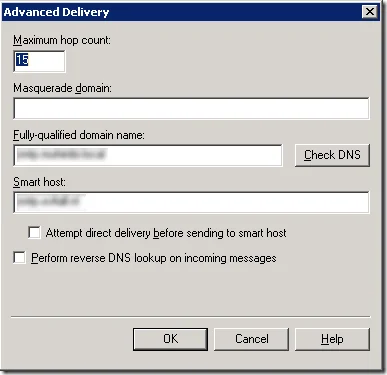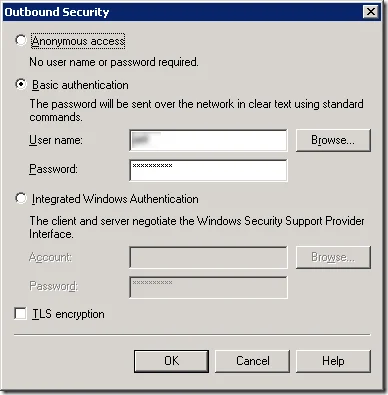This article explains how to configure the Microsoft SMTP Service to authenticate with a public / ISP hosted SMTP server and relay messages through it.
When deploying SharePoint in a small sized company or in a local branch office (or at home for testing purposes) - you know those companies that don’t have their own fancy SMTP server because under the covers they use Gmail or some other externally hosted mail system - then making sure that SharePoint alerts are delivered can be challenging.
The main reason for this is that this company may connect via a consumer grade connection with an IP-range that is blacklisted by most mail servers as they use a list from Sorbs (http://www.sorbs.net/) to identify common sources of spam.
An easy way to detect this is to make sure you log all SMTP fields and check for the following in the SMTP log files:
2008-12-17 08:48:56 212.227.15.150 OutboundConnectionResponse <some server name> - - - 550+RBL+rejection:+Dynamic+IP+Addresses+See:+http://www.sorbs.net/lookup.shtml?<some ip> 0 0 - - - -
Fortunately you can configure the SMTP Service in such a way that it relays all outgoing email via a ‘smart host’ and ‘authenticate’ on this smart host. This can be configured as follows:
Open the IIS Service Manager and navigate to the relevant SMTP Virtual server (There is usually only one).
Open the Properties and navigate to Delivery / Advanced.
In the ‘Smart host’ field enter the name of an SMTP server that you have access to, e.g. because you use Outlook to send emails using that server. Click OK to close the window.
Now, for the real trick, click the ‘Outbound Security’ button. This will allow you to specify an account that is used to authenticate with the smart host / outgoing SMTP Server.
Select Basic authentication and enter the username and password that you use to connect to the SMTP server.
That is it. Test it by configuring an alert in SharePoint and making a change to a document. Look in your SMTP log file for clues if things are not working.
Labels: Articles



